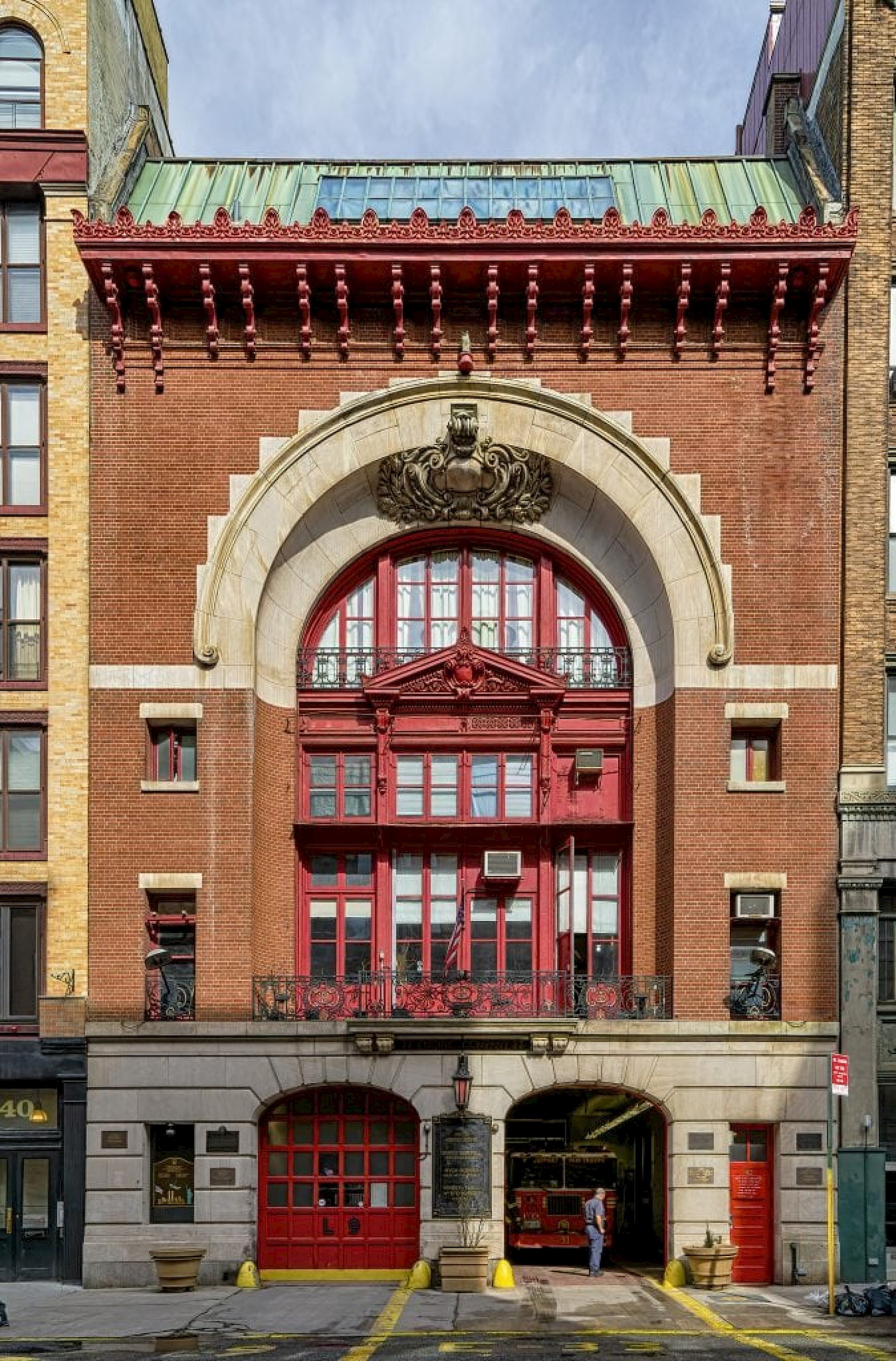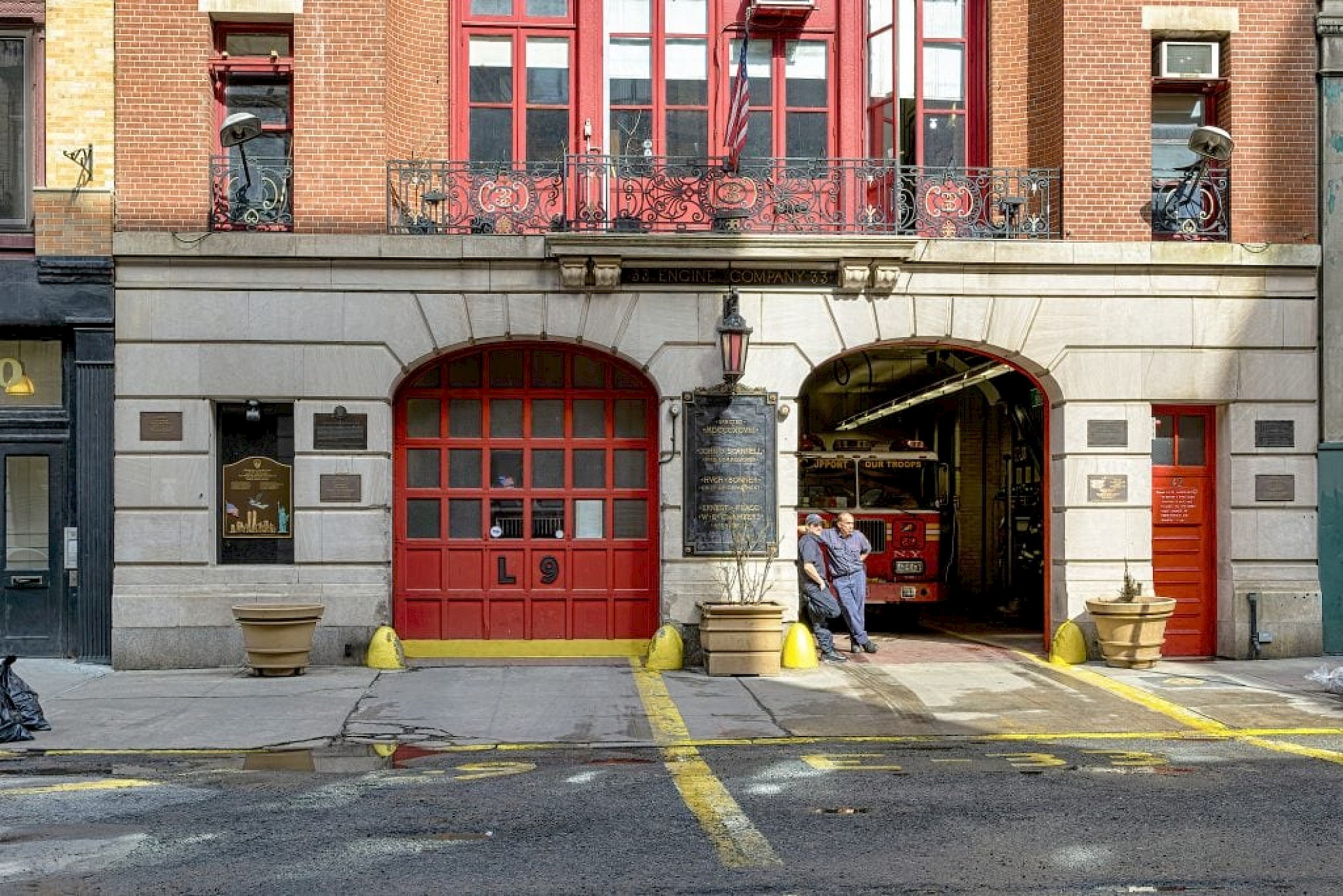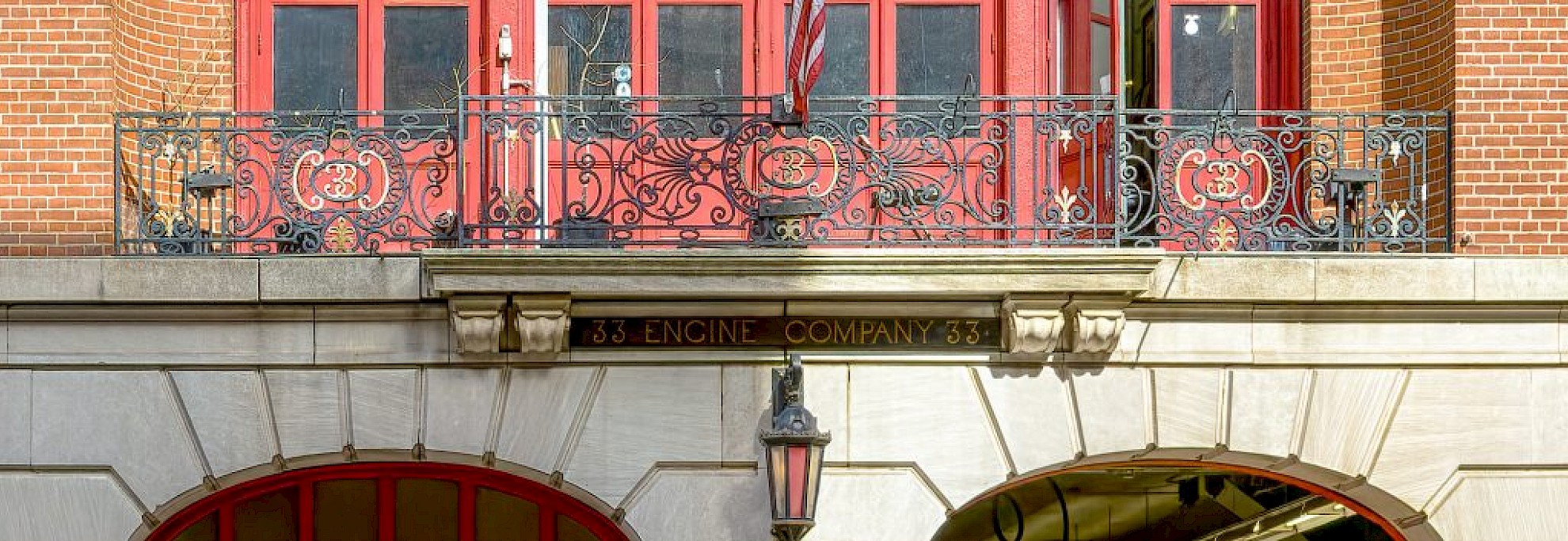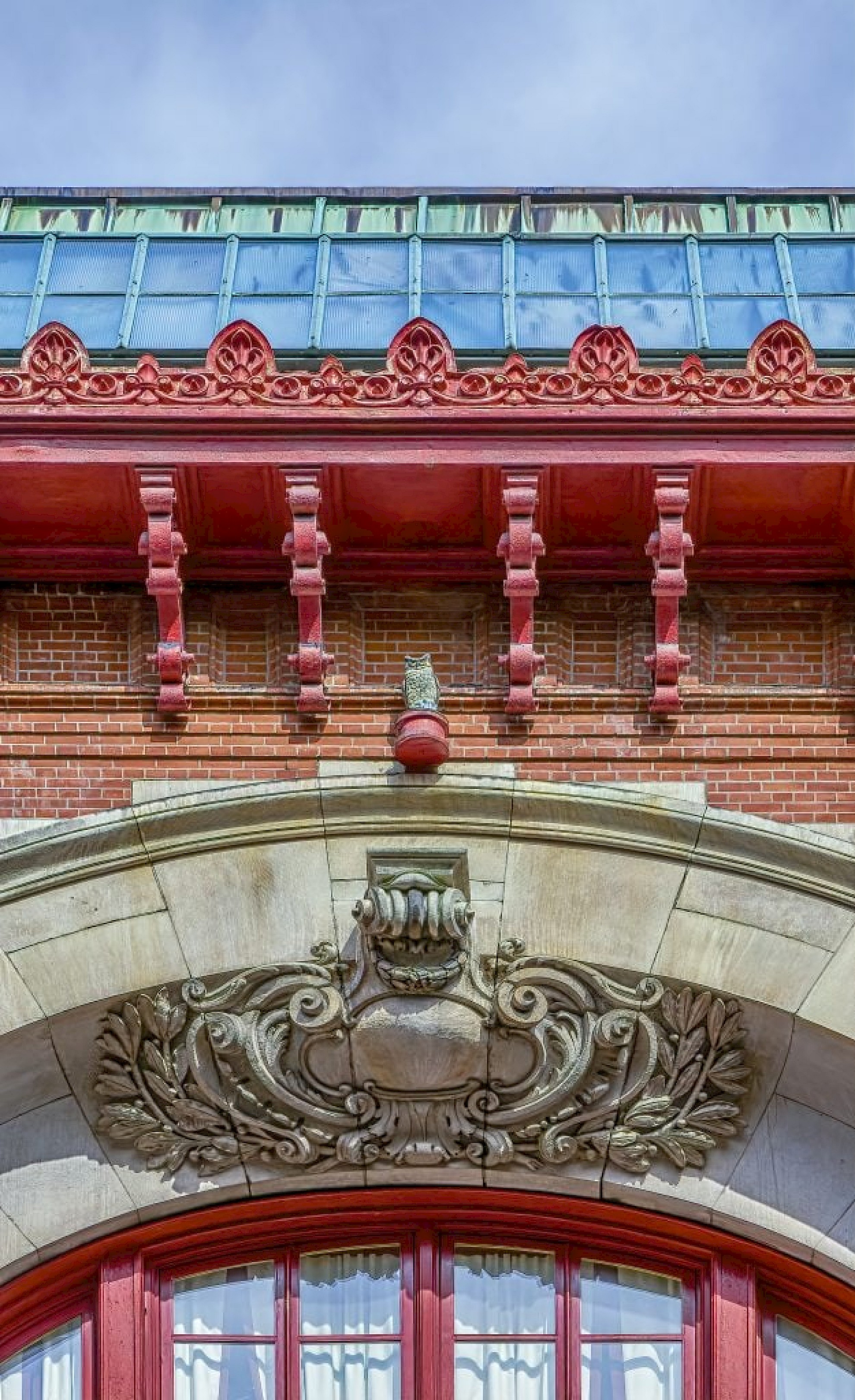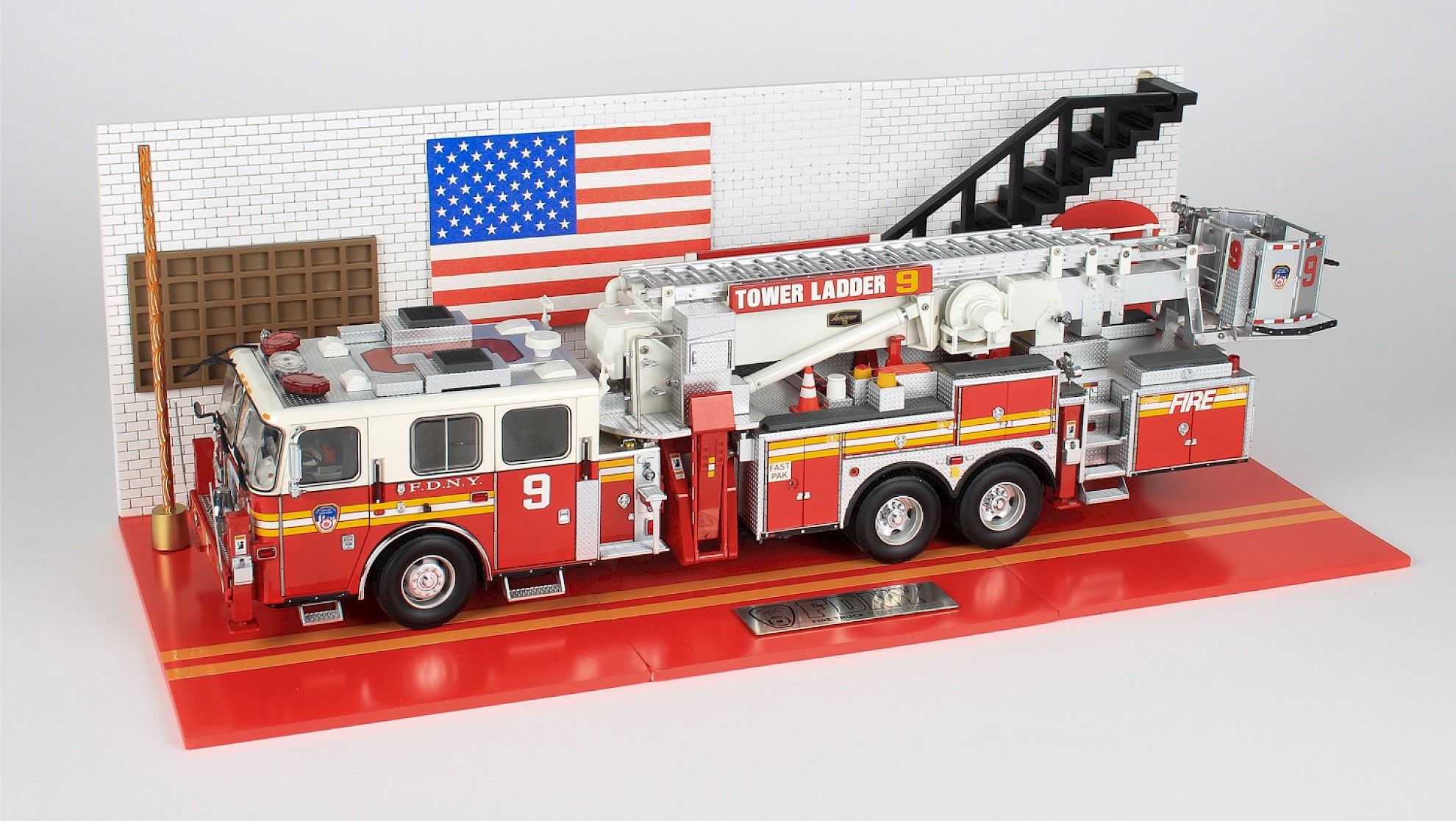A short history of Engine Company 33 and Ladder Company 9
All images kindly reproduced from Newyorkitecture.com with a donation to the Foodbank For New York City
Firehouse, Engine Company 33 and Ladder Company 9 is a New York City Fire Department firehouse at 42 Great Jones Street in NoHo, Manhattan. The house dominates Great Jones Street on the block between Lafayette St to the west and The Bowery to the east, hence the nickname for this fire house ‘Bowery U’.
Ladder 9 and Engine Company 33 sit side by side underneath a magnificent arch at 42 Great Jones St.
The monumental building is a Beaux-Arts structure built in 1899 by Ernest Flagg and W.B. Chambers.
The central plaque on the front of the building honors John J Scannell, first New York City Fire Commissioner, Hugh Bonner, Chief of Department and sixth NYC Fire Commissioner, and Ernst & Flagg and W.B.Chambers, Architects. The plaque to the left is a memorial to the ten firefighters from Engine Company 33 who lost their lives on the darkest day, September 11, 2001.
Beaux-Arts architecture is classical in nature with Greco-Roman styling which originated from the Ecole des Beaux-Arts (School of Fine Arts) in Paris. The style had a strong influence on architecture in the United States because of the many prominent American architects who studied there.
The façades of Beaux-Arts buildings typically combine features reminiscent of Greek and Roman Architecture, particularly columns and symmetry, with decorative elements from other historical styles. Building details and decorations are elaborate and include three-dimensional carved panels called bas-relief and rounded convex surfaces called cartouches. These are typically surrounded by garlands, or vines; decorative swags; and medallions, or medal-like ornamentation. Many of these features can be seen in the fire house at Great Jones St today.
The number ‘33’ can be seen in the elaborate ironwork.
Ornate details, typical of Beaux-Arts architecture.
In his Daytonian in Manhattan blog: Engine Company 33 – Nos. 42–44 Great Jones Street, Tom Miller points out some of the flamboyant details on the building and provides an excellent historical account of some of the exploits of Engine Company 33. Here’s a taster:
Engine Company 33 was formed the same year that the Fire Department was organized, and it still operated from its original house on Mercer Street. Now the city planned to erect a new station for the Company on plots purchased at Nos. 42 and 44 Great Jones Street. The plans were to incorporate the Fire Chief’s “night headquarters” within the building.
The neighbourhood had been, half a century earlier, among the most exclusive residential areas of the city, known as the Bond Street area. Here wealthy citizens with names like Astor and Delano lived in fine Federal-style mansions. By now, however, the upper-class had moved on and the old homes that had not been converted for business purposes housed sometimes less-than-respectable boarders.
In 1897 Mary Norton had died in her home at No. 42 Great Jones Street at just 39 years old. Early that same month, on March 5, May Franklyn who lived next door in No. 44 was shot twice by Philip Metz. The New York Times said May was “described as an actress” and that she “told the police that Philip Metz shot her because he was jealous.”
The two old houses were demolished in 1898 and construction began on the new Engine Company 33 house. By now public buildings were being designed with the City Beautiful Movement in mind—a philosophy that citizens who were surrounded by beautiful, monumental buildings would be prompted to lead lives of social harmony and order. Flagg’s and Chambers’ design would follow the lead.
The building, completed in 1899, was nothing if not monumental. Unlike its earliest predecessors the French Beaux-Arts structure nearly dismissed its utilitarian purpose in favor of flamboyant display. Above the solid limestone base with two bay doors, a grand central arch propelled upward. The concave arch was decorated with a bold, ornate cartouche, and within it three stories of windows were lavished with French-styled railings, a handsome pediment, and balcony. Above it all the deeply-overhanging cornice was supported by wonderful over-sized, paired brackets.
Miller continues his blog describing various events in the neighbourhood that characterized the fire risks posed by living conditions at the turn of the century, and the character of the firefighters from Engine Company 33 who rushed from fire to fire to tackle them. They include a busy night that ended with successfully extinguishing a stubborn fire at a clothing shop in 1902; an accident involving an open gas flame in a hat factory in 1906; the horrific Triangle Waist Factory fire in 1911; and a heart warming story involving a brown collie named ‘Smokey Josephine’ by those on the scene from Engine 33.
Miller’s fascinating article also goes on to mention the arrival of Ladder Company 9, who joined Engine Company 33 in the Great Jones fire house in 1948; the change in attitudes to women and romance within the Fire Department, and the devastating loss of 10 out of 14 members of Engine Company 33 in the attacks on the World Trade Centers on September 11, 2001.
You can read the full article here

